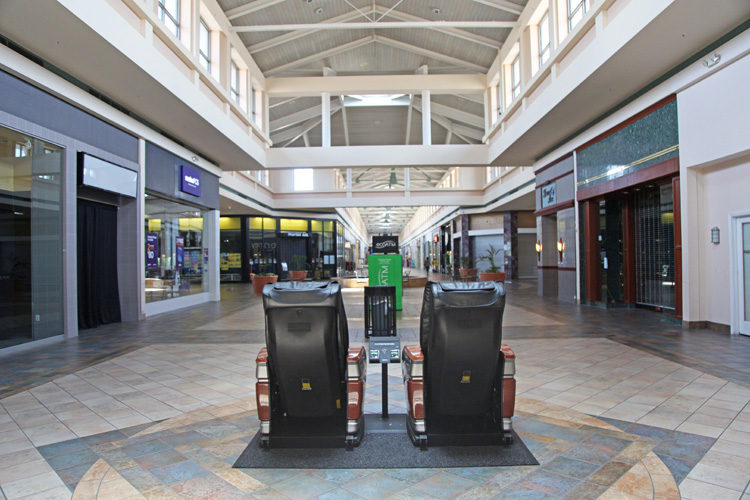
The Indian River Mall, which 23 years ago opened to great excitement, is now more than 25 percent empty – a depressing reality, but one that does not seem to have its latest owner yet ready to give up.
Two years after New York-based Kohan Retail Investment Group bought the struggling shopping center for $12 million, the mall continues to slide downhill, with more stores closing and the owner falling behind on property taxes and utility bills, same as the prior owner.
In late June, roughly 24 storefronts in the mall were empty and the food court offered just five dining options after Counter Culture Vero and Subway closed up shop. As more stores close, causing the mall’s value to plummet, the Kohan Group’s plans remain murky.
Kohan Group principal Mike Kohan told Vero Beach 32963 he’s been attempting to attract smaller retailers and recruit restaurants, but offered few details.
“It’s not an easy task,” Kohan said. “We’re still not there, but I’m very optimistic.”
Kohan has hired real estate firm Colliers International to spearhead the effort, he said. Representatives from the firm could not be reached for comment.
Kohan purchased the mall three years after Wells Fargo foreclosed on it and a neighboring shopping center. Simon Property Group – the nation’s largest mall owner – had defaulted on a $71.3 million loan.
Since then, Kohan encountered financial issues of his own, falling behind on more than $250,000 in property taxes in 2017. He’s now current on property tax payments, according to the Indian River County Tax Collector’s office.
More recently, Kohan neglected to pay two-months’ worth of water bills to the county, but paid the $2,400 he owed on June 21, said Vincent Burke, the county’s director of utilities services. Had Kohan failed to pay, water service to the mall would have been scheduled to be shut off, Burke said.
The closure of stores has spurred a steady decline in the mall’s value, said Wayne Bibeau, a commercial real estate appraiser for the Indian River County Property Appraiser’s office. The current appraised value is roughly $10.3 million, down $30.4 million from the $40 million-plus appraised value in 1998, county records show.
“As the mall has been experiencing a downward trend in occupancy, the value comes down with it,” Bibeau said.
“It is a struggle here,” said Tareek Beasley, owner of Flavaz Clothing & Accessories, who was having a going-out-of-business sale last week. Beasley, who operated the store in the mall for three years, said he began thinking about closing his store after about a year and half.
To combat closures and increase foot traffic, malls across the nation are reinventing themselves into destinations offering amenities, experiences and entertainment to enhance the shopping experience – trying to lure bowling alleys, bars, salons and fitness centers to frequent before, during or after shopping.
Kohan said that type of mall is his goal but while Indian River Mall offers a handful of dining options, a video arcade and a movie theater, the rest of the shopping center has become a hodgepodge of businesses including a vape shop, military store, Hyundai storefront, pet adoption center, martial arts centers and a church.
The mall is still anchored by several department stores that independently own or lease their land and buildings including Dillard’s, JCPenney, Macy’s and a struggling Sears, which has reduced its operating hours like many of the smaller retailers in the mall.
Indian River County Commissioner Tim Zorc said he has made several fruitless attempts to contact Kohan to understand his business plan, strategize about ways to reinvigorate the mall and offer help.
“We’d like to be as helpful as we can if we knew what he wanted to do, but to my knowledge we have not had any conversations about that,” Zorc said. “I think there is a list of opportunities that could be implemented at the site out there.”
The county could potentially reduce the amount of parking the mall is required to maintain – the lot is typically empty except near anchor store entrances and the movie theater – which would free the owner to sell part of the property to mixed-use developers or stand-along retailers, Zorc said.
That would put money in the owner’s pocket and potentially increase the mall’s foot traffic and customer base, especially if townhomes, condos or apartments were built as part of a mixed-use project.
In the short term, however, Bibeau doesn’t foresee the mall bouncing back. But should more homes sprout up in the western portion of the county in coming years, demand could increase.




Comments